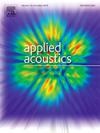A framework for developing adaptive acoustic comfort: Insights from expert interviews
IF 3.4
2区 物理与天体物理
Q1 ACOUSTICS
引用次数: 0
Abstract
The ability of individuals to adapt to environmental conditions, known as environmental adaptation, reflects their capacity to modify behaviors and physical surroundings to better align with external demands. In thermal comfort assessments, this adaptation process is evaluated using the adaptive thermal comfort model. Similarly, the relationship between individuals’ adaptability and their perception of acoustic environments is also considered to play a significant role in acoustic comfort assessments. Based on this foundation, this study investigates the development and assessment of an adaptive acoustic comfort model, following on its initial definition: “a model that relates indoor acoustic conditions to outdoor ones, moderated by other environmental, contextual, and personal factors.” Through expert interviews, the research aims to develop a preliminary framework for assessing adaptive acoustic comfort, highlighting the importance of environmental adaptation and user tolerance. This framework includes the identification of assessment methods, acoustic indicators, and adaptive model variables necessary for testing the model’s existence and effectiveness in acoustic evaluations. By examining acoustic comfort from an adaptive perspective, the study recommends evaluating indoor acoustic comfort in relation to outdoor conditions. To capture variability in user responses, it suggests having real-world data alongside laboratory studies using specific acoustic indicators. Additionally, the model framework emphasizes the necessity of evaluating personal, environmental, and building-related variables through various developed adaptive models.
开发自适应声学舒适的框架:来自专家访谈的见解
个体适应环境条件的能力,被称为环境适应,反映了他们调整行为和物理环境以更好地适应外部需求的能力。在热舒适评价中,使用自适应热舒适模型来评价这种适应过程。同样,个体的适应性与其对声环境的感知之间的关系也被认为在声舒适评估中起着重要作用。在此基础上,本研究调查了自适应声学舒适模型的发展和评估,遵循其最初的定义:“一个将室内声学条件与室外声学条件联系起来的模型,由其他环境、背景和个人因素调节。”通过专家访谈,本研究旨在建立一个评估自适应声舒适性的初步框架,强调环境适应和用户容忍的重要性。该框架包括识别评估方法、声学指标和自适应模型变量,以测试模型在声学评估中的存在性和有效性。通过从适应性角度检查声舒适,该研究建议评估室内声舒适与室外条件的关系。为了捕捉用户反应的可变性,它建议将真实世界的数据与使用特定声学指标的实验室研究结合起来。此外,模型框架强调了通过各种已开发的自适应模型评估个人、环境和建筑相关变量的必要性。
本文章由计算机程序翻译,如有差异,请以英文原文为准。
求助全文
约1分钟内获得全文
求助全文
来源期刊

Applied Acoustics
物理-声学
CiteScore
7.40
自引率
11.80%
发文量
618
审稿时长
7.5 months
期刊介绍:
Since its launch in 1968, Applied Acoustics has been publishing high quality research papers providing state-of-the-art coverage of research findings for engineers and scientists involved in applications of acoustics in the widest sense.
Applied Acoustics looks not only at recent developments in the understanding of acoustics but also at ways of exploiting that understanding. The Journal aims to encourage the exchange of practical experience through publication and in so doing creates a fund of technological information that can be used for solving related problems. The presentation of information in graphical or tabular form is especially encouraged. If a report of a mathematical development is a necessary part of a paper it is important to ensure that it is there only as an integral part of a practical solution to a problem and is supported by data. Applied Acoustics encourages the exchange of practical experience in the following ways: • Complete Papers • Short Technical Notes • Review Articles; and thereby provides a wealth of technological information that can be used to solve related problems.
Manuscripts that address all fields of applications of acoustics ranging from medicine and NDT to the environment and buildings are welcome.
 求助内容:
求助内容: 应助结果提醒方式:
应助结果提醒方式:


